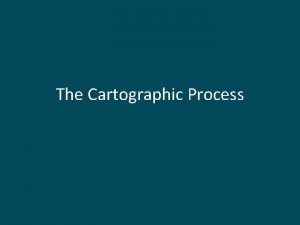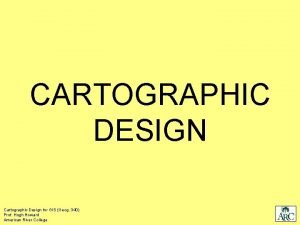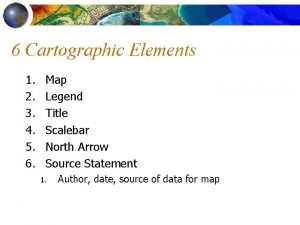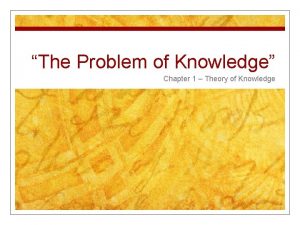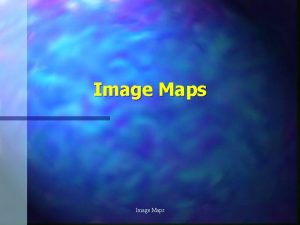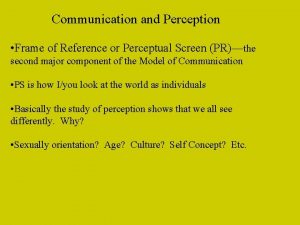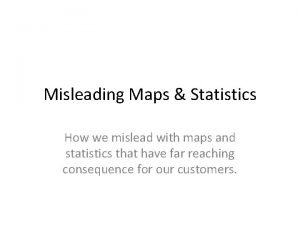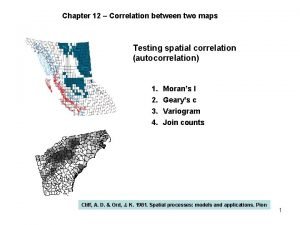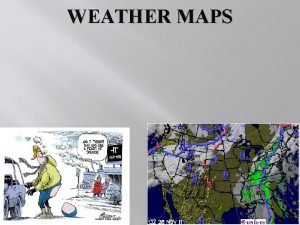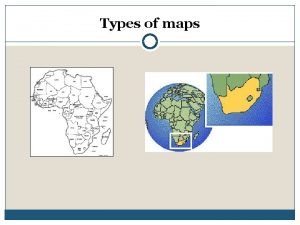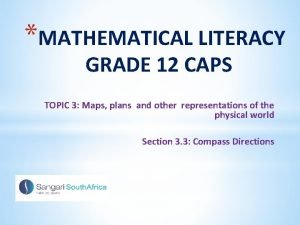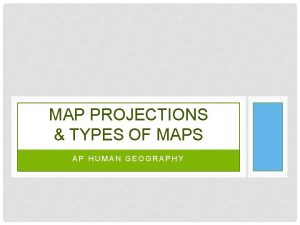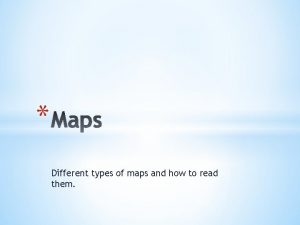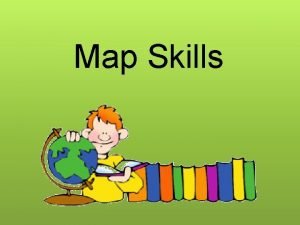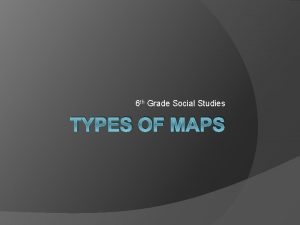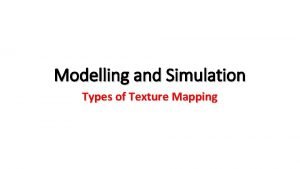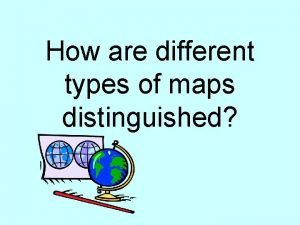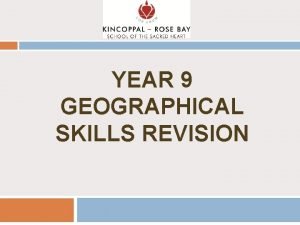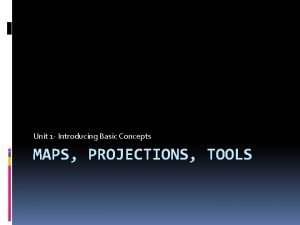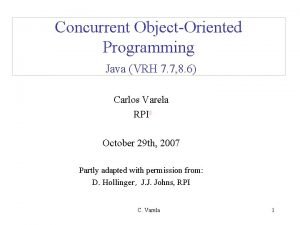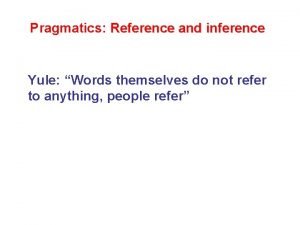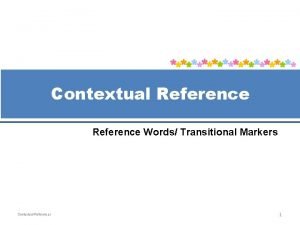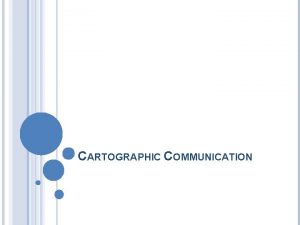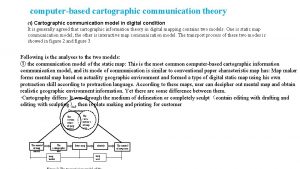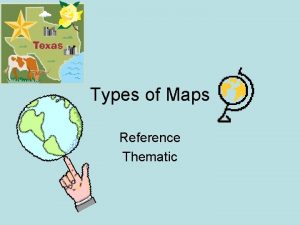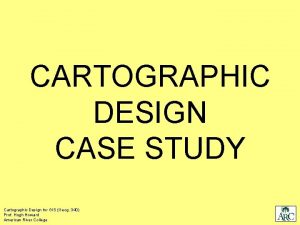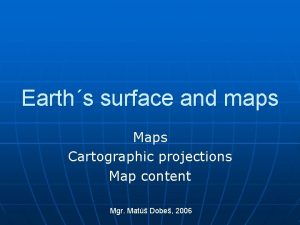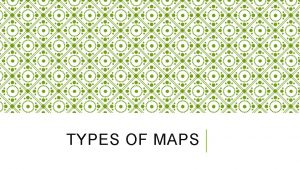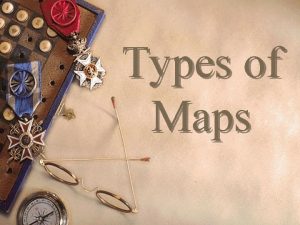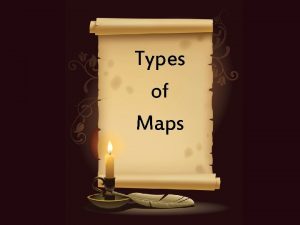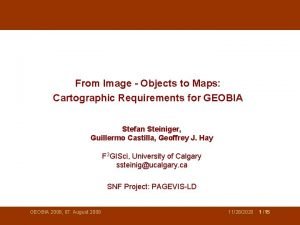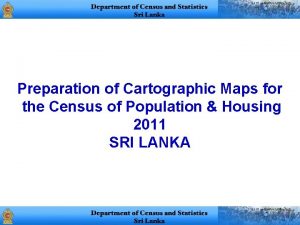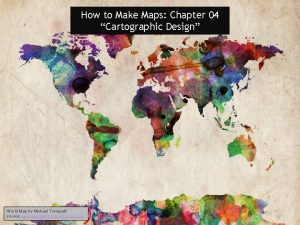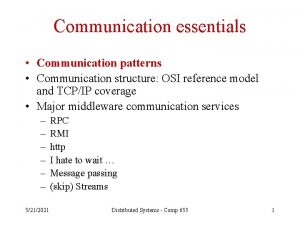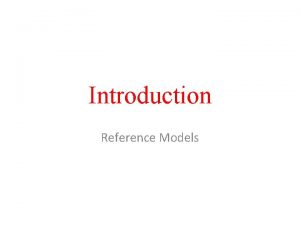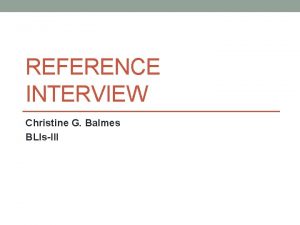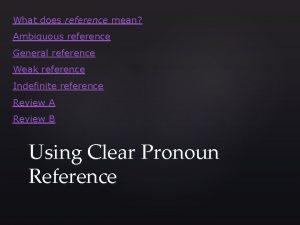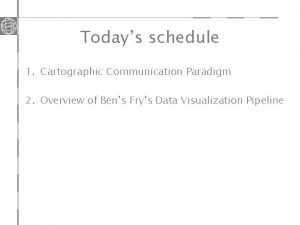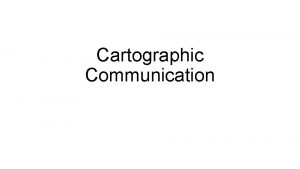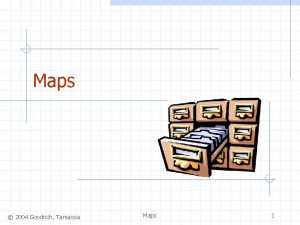CARTOGRAPHIC COMMUNICATION TWO TYPES OF MAPS Reference Maps































- Slides: 31

CARTOGRAPHIC COMMUNICATION

TWO TYPES OF MAPS: Reference Maps - Show locations of places and geographic features - Absolute locations Thematic Maps - Tell a story about the degree of an attribute, the pattern of its distribution, or its movement. - Relative locations What are reference maps used for? What are thematic maps used for?

GRADUATED CIRCLE MAPS OR PROPORTIONAL SYMBOL shapes of different sizes to show where and how much Larger the circle = more phenomenon Single variable Population, median income, wheat production, or average land value Swine Flu


DOT MAP A single or specified number of occurrences is represented by a dot Good for suggesting spatial pattern, distribution, and dispersion Poor at showing precise value Crime Map

COMMERCIAL WIRELESS SIGNALS

ISOMETRIC/ISOPLETH/ISOLINE MAP Features isolines that connect points registering equal values of whatever is being mapped. Isoline show where there is a uniform occurrence Poor at showing information that might be patchy

Perception of Place Where Pennsylvanian students prefer to live Where Californian students prefer to live


CHOROPLETH Shows data in a predetermined unit. Each unit is shaded to represent how much of an item in the borders Can give a false impression of abrupt change Smaller units are better than larger (1 -5) is more accurate than (1 -50) Election Results

CARTOGRAM Uses statistical data to transform a space so that the largest unit on the map is the one showing the greatest statistical value Gives a good visual representation of quantity but not good at communicating exact numbers


MOST THEMATIC MAPS HAVE: Simplification What has the cartographer chosen to keep Why are things left out? Symbolization What do the symbols add to the meaning? Does it look attractive? Classification Thematic maps use categories Equal interval or set values Induction Information is under the surface or hidden Linked to classification Centering- what is placed in the center of the map shows cultural/artistic value

SIMPLIFICATION

SIMPLIFICATION

SYMBOLIZATION

SYMBOLIZATION

SYMBOLIZATION

SYMBOLIZATION

CLASSIFICATION

CLASSIFICATION

CLASSIFICATION

INDUCTION

CENTERING

CENTERING

CENTERING

SCALE

SCALE

MESSAGE/ART

Message/Art

 Cartographic process
Cartographic process Cartographic design principles
Cartographic design principles Cartographic elements
Cartographic elements Cartographic paradox
Cartographic paradox Client side image processing
Client side image processing Reittihaku google
Reittihaku google Reference node and non reference node
Reference node and non reference node Reference node and non reference node
Reference node and non reference node Frame of reference communication
Frame of reference communication Give one or two examples of how maps can be misused.
Give one or two examples of how maps can be misused. Correlation between two maps
Correlation between two maps In text referencing for multiple authors
In text referencing for multiple authors Types of weather maps
Types of weather maps Types of maps in tourism
Types of maps in tourism Mathematical literacy grade 12 maps and scales
Mathematical literacy grade 12 maps and scales Types of maps in mathematical literacy grade 12
Types of maps in mathematical literacy grade 12 Mathematical literacy grade 11 assignment topic measurement
Mathematical literacy grade 11 assignment topic measurement Different map types
Different map types Robinson projection ap human geography
Robinson projection ap human geography Different kinds of maps
Different kinds of maps What are the three basic types of maps
What are the three basic types of maps 6 types of maps
6 types of maps Texture map types
Texture map types Types of maps
Types of maps Types of maps
Types of maps Different types of maps in human geography
Different types of maps in human geography Types of maps
Types of maps Why array index starts with 0
Why array index starts with 0 Inference and reference in pragmatics
Inference and reference in pragmatics Contextual reference
Contextual reference Parallel and serial communication
Parallel and serial communication What is oral communication and written communication
What is oral communication and written communication
